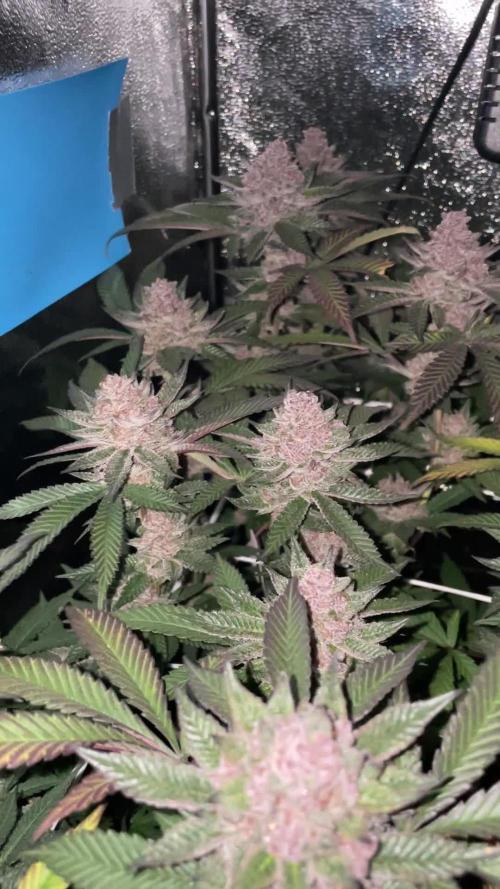The Grow Awards 2026 🏆 























Likes
4
Share


@805homegrown
Follow
July 7 start of week 9 first week of transition to flowering.
July 8th I sprayed some (FSW) fermented sea water with (FPJ) fermented plant juice and (LABS)lactic acid bacteria as a foliage spray. Sprayed 2 hours before the lights came on.
July 9th the girls loved the spray I made for them on the 8th
July 12th I sprayed with WS-CAPO water soluble calcium potassium
Foliage spray.
Likes
4
Share


@Exoticfarm99
Follow
El viernes 21 regamos foliarmente con Delta 9 preparándolas para floracion
Likes
4
Share


@Maximusprime
Follow
Hey everyone,
just harvested at day 60 of flower and I’m really happy with how things turned out. Uploaded some harvest shots along with exact day tags. The colors and overall development finished nicely!
After the chop, I went through a full clean-up with isopropyl alcohol. The root aphid situation should be fully under Control now.
I have got some clones ready in a separate space, and I’ll be restarting soon.
I will give an update on harvest results in the next few weeks, but for now - the terps dont lie! Very nice fruity and floral smell with a little candygas in it too.
Happy growing ✌️
Processing
Likes
6
Share


@Mannabis
Follow
Time for the stretch! Lots of flowering growth happening now. I can see where the bud spots will be so I’m going to have to stop moving the branching around in the Scrog, also the branches are getting thick and less pliable.
Likes
32
Share


@EBPbyEVD
Follow
I only use a stimulant and cal mag. There will be no training for the entire period; this is not necessary in this grove. Growth is going quite well, they are even outpacing my babies who were planted earlier. The plant in the middle is a little behind. The lamp operates at 25%. Further more, success is inevitable.
Likes
11
Share


@ganjaman24
Follow
It’s bern roughly two months these guys have been growing! Lst’d Both but untied the gg because I wasn’t sure she was benefiting from it so I’m going to do it over. These ladies (I hope) will start their flower journey next week when I revive my new flower tent 😎..stay tuned for some epic buds..I hope!!
Processing
Likes
9
Share


@High_Grade_Dadli
Follow
This week was good, trying to give transiting plant as much light expo. as possible......also removed most of the smaller bud site........the one that is in full flower mood is super healthy n green gonna start packing size from next week on a (k) diet
Likes
4
Share


@Mr_nugs_lover_David
Follow
She's looking beautiful and she's getting huge now on her 3rd week,I can't wait to transplant her asap. She's gonna be such a beautiful big bush! So excited! Follow me on this adventure to see how I grow my organic medicine! Peace ✌️ 💚
Likes
44
Share


@rhodes68
Follow
10/13 Day 43 Fed Bio-Bloom 15ml/ Bio-Grow 5ml/ Big Bloom 15ml per gal
Mel and Lisa 1 gal each Kim and Jen 0.5 gal each, they just dont drink like their more sativa sisters. With Lisa being a green bud pheno think out of the 9 LSD-25s I have grown seen the most common phenos purple bud, green bud ,big leaf, thin leaf, dry leaf, oily leaf, yellow leaf (not sure about that) tall plant, short plant, and they come in all combinations it seems though I have only seen the "oily leaf" on the big leaf phenos. Have 20 more to grow in the coming year so time will tell.
Likes
12
Share


@BeHappyNtoke
Follow
This girl is still going strong I’m trying to figure out if I could breed this plant or is it to late I’d be sad if I couldn’t she definitely is a small beauty would love to get more seeds I do have pollen stored
Likes
18
Share


@PrinceOfHerbs
Follow
Extremely sticky and a wonderful aroma.
I suspect just under 1-2 weeks until harvest
Dlowering Day 54
Likes
3
Share


@BudxLess
Follow
Well, this is certainly a special strain. MASSIVE colas and rock hard nugs combined with an earthy flavor is an instant winner in my books. 124 dried and cured grams from one plant in a 3 gallon hand watered soiless mix, so this genetic definitely has the potential for more greatness. Smoking on this now and it is a smooth smoke with a relaxing and uplifting body feel to it. A long lasting stone and a very pungent smell. Fastbuds did a great job on this product.






































